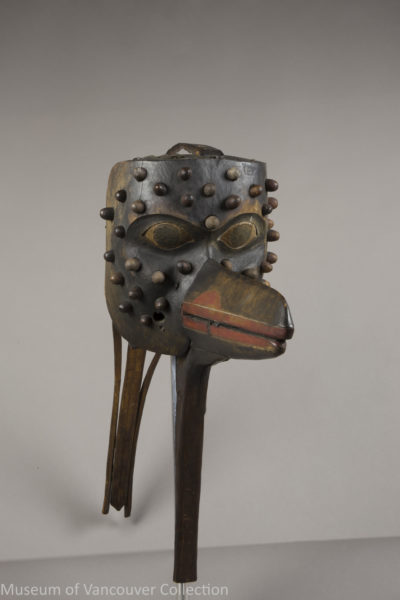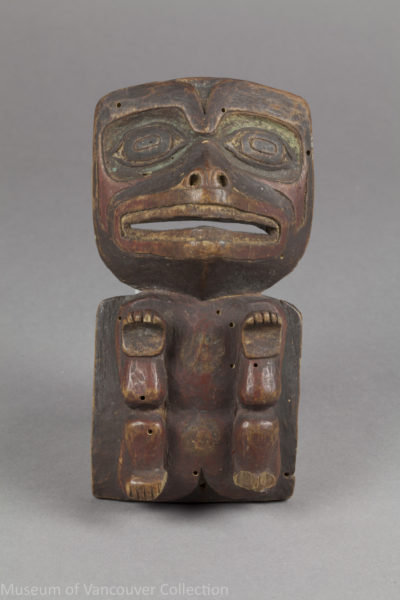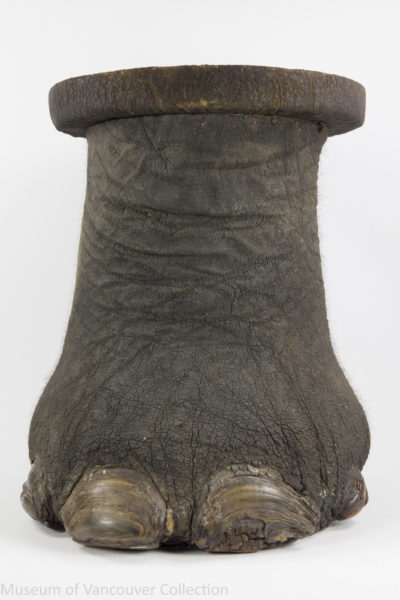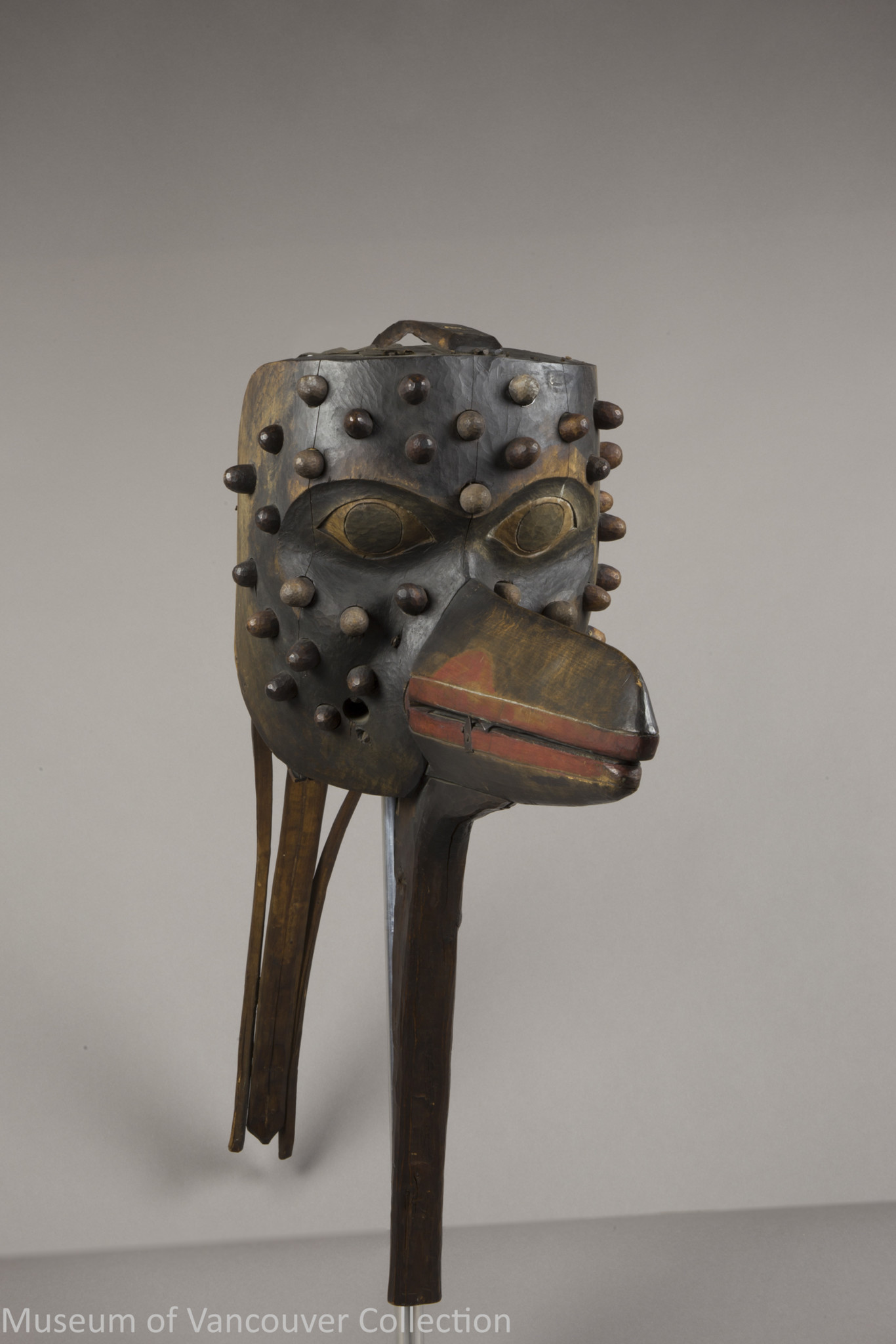Rare and Amazing Artifacts
Reveal Sensational Stories & Secrets of Vancouver
The Museum of Vancouver (MOV) poses provocative questions about our perception of stories with Unbelievable – a new exhibition on display June 24 – September 24, 2017. Diving deep into the vaults of MOV, this quirky exhibition assembles iconic artifacts, storied replicas, and contested objects for a mind-bending exploration of the role stories play in defining lives and communities – and what happens when we question the tales we’ve long relied upon.
“Stories are how we create our community and nation. They are literally a matter of life and death, possessing the power to bring us together or tear us apart,” explained Gregory Dreicer, MOV’s Director of Curatorial and Engagement and the creative mind behind Unbelievable. “A shockingly diverse collection of objects will provoke laughter, nostalgia, and fear. What unifies them is not the physical objects themselves – but the contradictory and unbelievable stories that surround each of the treasures on display. We are taking people deep behind the scenes – in order to explore the creation of stories and how they define our past, present, and future.”
The first large Unbelievable object that visitors will encounter is the Thunderbird totem pole. It appeared in controversial filmmaker Edward Curtis’ 1906 work In the Land of the Head Hunters. The totem pole has since been replicated in fiberglass, as well as re-carved to stand in Stanley Park – but the original has been tucked away within MOV’s vaults. The pole’s complex histories lay the groundwork for an exploration of stories, symbols, and struggles that follow. Furthermore, the Thunderbird totem pole challenges our fundamental thinking about reconciliation and Canada in its 150th year.
Unbelievable will also include a search for other contemporary ‘totems’, each with contrasting stories about a point in time in Vancouver. These include the original ‘R’ from Arbutus Street’s ‘The Ridge’ sign (where a replica now adorns condos); a full-scale bronze-cast model of Stanley Park’s derivative Girl in a Wet Suit; and opposing and battling Quatchi costumes from the 2010 Olympic Winter Games – one an official costume, the other an anti-mascot built by protestors.
The artifacts will also illustrate the tangled threads of narrative around Vancouver’s relationship with First Nations communities. Pieces include a carving given to George Vancouver’s crew, a large mask of a bird depicting the European-brought disease of smallpox, and Pauline Johnson’s ‘Indigenous’ dress, a fantasy garment for a cultural celebrity with a vivid imagination.
Finally, more surprising items ask visitors to create their own stories about unique artifiacts found within the MOV collection, such as a side table crafted from an elephant foot, a chair cobbled together from cattle horns, and favourite pieces of garbage salvaged by the City of Vancouver’s sanitation workers. This interactive component of the exhibition will encourage visitors to share their thoughts about how each object came to be, and then later present them with the opportunity to compare their narrative to MOV’s documentation of each artifact.
Inspiration for Unbelievable originated last fall in the wake of the American election, which highlighted an astonishing aspect of human nature: people reject facts that don’t fit their story, even if the information is true. MOV concluded an exhibition exploring the notion of truth – including the museum’s role as one of Canada’s most trusted institutions – could not be more timely or relevant.
Essentially, lack of trust, the reach of the web, the crisis in journalism and democracy have sparked Dreicer to embark on a quest for stories to believe in. “We live in an age of information where alternative facts and absolute falsehoods have run rampant.” continued Dreicer, “In an era where nothing can be taken at face value, MOV wanted to create an exhibition that raises questions. With Unbelievable, we ultimately hope visitors will walk away awed by the power of story – with a different understanding and possibly skepticism – about the tales they encounter and the stories they tell themselves.”
About Museum of Vancouver (museumofvancouver.ca)
The Museum of Vancouver connects Vancouverites to each other and connects Vancouver to the world. The museum’s programs, exhibitions, and collections bring people together and inspire conversation about the future. The museum is an independent non-profit organization dedicated to inspiring a socially connected, civically engaged city.
| LISTING INFORMATION | MOV presents Unbelievable |
| Dates: | June 24 – September 24, 2017 |
| Address: | Museum of Vancouver 1100 Chestnut Street, Vancouver, BC |
| Website: | museumofvancouver.ca |

Artifact: AA 84 – Smallpox mask
Material: Alderwood
Dimensions in cm.: 77.50 x 30.48 x 99.06 (W/H/D)
Short description: A carved alder bird mask depicting smallpox with an articulated beak that is activated by the wearer with a lever. It has a built-in bent wood harness to support the shoulders.
Photo credit: Museum of Vancouver Collection

Artifact: AA 2428 – Vancouver Expedition frontlet, c. 1790s
Material: Wood
Dimensions in cm.: 6.98 x 13.97 x 5.50 (W/H/D)
Short description: A carved wooden bear with open jaws. Collected at Nootka Sound by Midshipman Thomas Dobson on HMS “Discovery” under Captain George Vancouver 1791-1795. Dobson was brought onboard as a Spanish translator.
Photo credit: Museum of Vancouver Collection

Artifact: NM 253 – Elephant foot
Dimensions in cm.: 47.00 x 60.00 (Diam/H)
Short description: Elephant foot table from prominent Vancouverite, Alexander Bruce Robertson’ taxidermy collection now housed at the museum. Mr. Robertson hunted the elephant himself while on safari in Africa, and the table was probably prepared at RJ Pop, a local taxidermy store Mr. Robertson used to mount his animals.
Photo credit: Museum of Vancouver Collection

